 2016 Mitsubishi ASX I (facelift 2016) Dimensions, Size & Specs
2016 Mitsubishi ASX I (facelift 2016) Dimensions, Size & SpecsMeasurements of the 2016 Mitsubishi ASX I, engineered for optimal performance and comfort
| Dimensions | |
|---|---|
| Length: | 4355 mm171.5 in14.3 ft |
| Width: | 1770-1810 mm69.7-71.3 in5.8-5.9 ft |
| Width (Opened Mirrors): | 2082-2133 mm82.0-84.0 in6.8-7.0 ft |
| Height: | 1640 mm64.6 in5.4 ft |
| Ground Clearance: | 180-190 mm7.1-7.5 in0.6-0.6 ft |
| Trunk Capacity: | 419 liter14.8 cu ft |
| Trunk Capacity (Max): | 1219 liter43.0 cu ft |
| Weight Specifications | |
| Curb Weight: | 1260-1520 kg2778-3351 lbs |
| Maximal permitted Weight: | 1870-2060 kg4123-4542 lbs |
| Roof Load: | 80 kg176 lbs |
| Tire Specifications | |
| Rims Sizes: | 18-inch rims:
|
| Tire Sizes: |
|
The Mitsubishi ASX I (facelift 2016) is a compact SUV produced between 2016 and 2019, representing a refreshed version of the original ASX crossover. This generation offers a refined exterior design and practical dimensions that make it ideal for urban and suburban driving while providing utility and comfort. In terms of size, the ASX I facelift measures 4355 mm (171.5 inches) in length, making it compact yet spacious enough for daily use. The width varies from 1770 mm to 1810 mm (69.7 to 71.3 inches), depending on the specification, while the width with mirrors opened extends from 2082 mm to 2133 mm (82 to 83.9 inches), important for parking and maneuvering considerations. Its height stands at 1640 mm (64.6 inches), providing a commanding view of the road typical for SUVs.
Weight-wise, the curb weight ranges from 1260 kg to 1520 kg (2778 to 3351 lbs), depending on equipment and drivetrain, with a maximum permissible weight between 1870 kg and 2060 kg (4123 to 4543 lbs). The ground clearance or ride height is set between 180 mm and 190 mm (7.1 to 7.5 inches), which ensures good off-road capability and protection from obstacles without compromising on-road comfort.
Luggage capacity is a strong point for the ASX I facelift, featuring 419 liters (14.8 cubic feet) of space with rear seats up and expanding to a substantial 1219 liters (43.0 cubic feet) when the rear seats are folded down. This flexibility makes the vehicle suitable for family trips, grocery runs, or carrying larger items. The roof load limit is 80 kg (176 lbs), allowing for additional cargo options like roof boxes or bikes.
The ASX I facelift rides on tire sizes 225/55 R18 or 215/70 R16 mounted on rims sized 7.0J x 18 or 6.5J x 16 inches respectively, balancing ride quality and handling precision.
Overall, the Mitsubishi ASX I (facelift 2016) stands out as a versatile, well-sized compact SUV that offers a harmonious blend of urban maneuverability and practical utility, making it a competitive option in the compact crossover segment from 2016 to 2019.
Discover the standout features that make the 2016 Mitsubishi ASX I a leader in its class
Have a question? Please check our knowledgebase first.
The Mitsubishi ASX I facelift (produced from 2016 to 2019) measures 4355 mm (171.5 inches) in length, providing a compact SUV footprint ideal for urban and suburban driving. The width ranges between 1770 mm to 1810 mm (69.7 to 71.3 inches), depending on specific trim and mirror folding status. When mirrors are opened, the width increases to between 2082 mm and 2133 mm (81.9 to 83.9 inches). The height stands at 1640 mm (64.6 inches), contributing to a comfortable cabin space with good headroom. These dimensions position the ASX I facelift firmly in the compact SUV category, balancing agility with passenger space.
The curb weight of the Mitsubishi ASX I facelift ranges from approximately 1260 kg to 1520 kg (2778 to 3351 pounds), depending on the equipment level and options chosen. This weight affects the vehicle's handling, fuel consumption, and performance characteristics. The maximum permissible weight, which includes passengers, cargo, and any additional load, spans from 1870 kg to 2060 kg (4123 to 4543 pounds). This weight capacity enables the ASX to comfortably carry a full load of occupants along with luggage without compromising safety or driving dynamics.
The Mitsubishi ASX I facelift offers a practical luggage capacity of 419 liters (approximately 14.8 cubic feet) with all seats in place, which is above average for a compact SUV. This space is well-suited for everyday shopping, luggage for a weekend trip, or sports equipment. When the rear seats are folded down, the luggage capacity significantly increases to 1219 liters (about 43 cubic feet). This expanded space allows for transporting larger items, furniture, or more extensive cargo, enhancing the vehicle's versatility for family outings or moving tasks.
With its side mirrors folded, the Mitsubishi ASX I facelift has a width between 1770 mm to 1810 mm (69.7 to 71.3 inches), which helps when maneuvering in tight parking spaces or narrow streets. When the mirrors are opened, the vehicle's width increases significantly to between 2082 mm and 2133 mm (81.9 to 83.9 inches). This broader stance contributes to improved driver visibility and overall safety during road driving but requires more space when parking or driving through narrow passages. It’s essential for owners to consider these dimensions in daily use environments.
The Mitsubishi ASX I facelift has a ride height or ground clearance of between 180 mm and 190 mm (7.1 to 7.5 inches). This relatively high ground clearance allows the SUV to handle moderate off-road conditions such as gravel roads, uneven terrain, and urban obstacles like speed bumps with ease. While not designed as a dedicated off-road vehicle, this clearance helps protect the undercarriage and offers a commanding driving position, making it a versatile option for drivers who need both city commuting and some light adventure capabilities.
The Mitsubishi ASX I facelift measures 4355 mm (171.5 inches) in length and has a maximum width of up to 2133 mm (83.9 inches) with mirrors opened. Standard single-car garages typically have an internal width ranging from about 2400 mm to 3000 mm (94.5 to 118 inches) and lengths around 4800 mm (189 inches) or more. Given these dimensions, the ASX I easily fits into a standard garage in terms of length and width. However, careful attention must be paid to width with mirrors open, especially in narrower garages. Folding mirrors while parking is recommended to ensure comfortable clearance.
The facelifted Mitsubishi ASX I (2016-2019) retained the same platform and core dimensions as the original ASX introduced earlier in the decade but introduced subtle updates in width and styling. The length remained consistent at about 4355 mm (171.5 inches). Width varied slightly between 1770 mm and 1810 mm (69.7 to 71.3 inches), with new designs sometimes contributing to minor dimension changes pertaining to mirrors and bumpers. Mostly, the facelift focused on aesthetic and tech updates rather than dimensional changes, so its footprint is similar to its predecessor, maintaining the compact SUV appeal without size compromises.
In the competitive compact SUV segment, the Mitsubishi ASX I facelift offers dimensions that are comparable to rivals such as the Nissan Qashqai, Honda HR-V, and Hyundai Tucson. With a length of 4355 mm (171.5 inches) and width ranging up to 1810 mm (71.3 inches), it aligns well with segment norms, sometimes offering slightly more luggage space than competitors. Its ground clearance of up to 190 mm (7.5 inches) also provides competitive versatility. Overall, the ASX's size ensures it is maneuverable in urban environments while still affording enough interior space and cargo capacity expected from modern compact SUVs.
The Mitsubishi ASX I facelift comes equipped with several rim and tire size options varying by trim and market. Available rim sizes include 7.0J x 18 inches and 6.5J x 16 inches. Corresponding tire sizes include 225/55 R18 and 215/70 R16 respectively. The larger 18-inch wheels provide a sharper and more responsive handling experience on paved roads with a sportier aesthetic, albeit often at the expense of ride comfort over rough surfaces. Conversely, the 16-inch wheels with higher-profile tires offer improved cushioning and off-road capability, enhancing comfort and durability on less smooth terrain.
The Mitsubishi ASX I facelift has a roof load capacity of 80 kg (approximately 176 pounds). This weight limit includes the roof rack itself and anything mounted on it. It is sufficient for typical roof accessories such as roof boxes, bike racks, or roof baskets designed for midsize SUVs. This capacity allows owners to extend cargo capacity for outdoor activities or road trips efficiently. However, it's important to ensure the total load does not exceed this limit to avoid damage to the roof structure or impaired vehicle handling.
Discover similar sized cars.
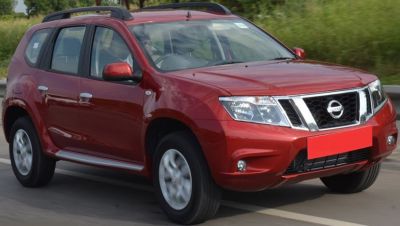
| Production: | 2013-present |
|---|---|
| Model Year: | 2013 |
| Length: | 4331 mm170.5 in |
| Width: | 1822 mm71.7 in |
| Height: | 1671 mm65.8 in |
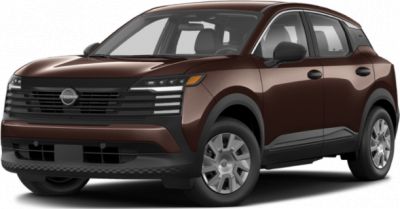
| Production: | 2024-present |
|---|---|
| Model Year: | 2025 |
| Length: | 4365 mm171.9 in |
| Width: | 1800 mm70.9 in |
| Height: | 1630 mm64.2 in |
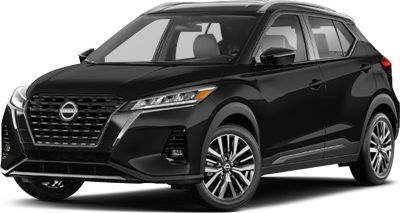
| Production: | 2021-2024 |
|---|---|
| Model Year: | 2021 |
| Length: | 4295 mm169.1 in |
| Width: | 1760 mm69.3 in |
| Height: | 1608 mm63.3 in |
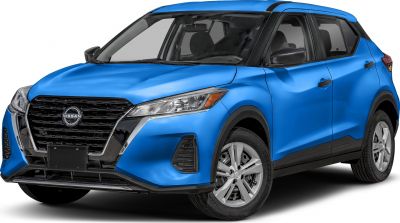
| Production: | 2020-present |
|---|---|
| Model Year: | 2020 |
| Length: | 4290 mm168.9 in |
| Width: | 1760 mm69.3 in |
| Height: | 1610 mm63.4 in |
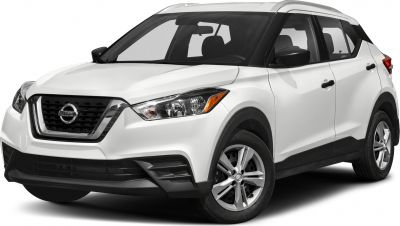
| Production: | 2017-2020 |
|---|---|
| Model Year: | 2018 |
| Length: | 4295 mm169.1 in |
| Width: | 1760 mm69.3 in |
| Height: | 1590 mm62.6 in |
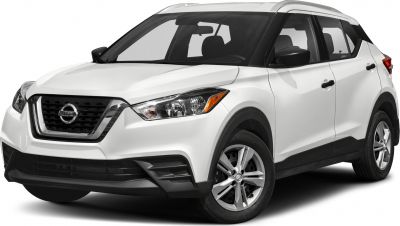
| Production: | 2017-2020 |
|---|---|
| Model Year: | 2018 |
| Length: | 4295 mm169.1 in |
| Width: | 1760 mm69.3 in |
| Height: | 1585 mm62.4 in |
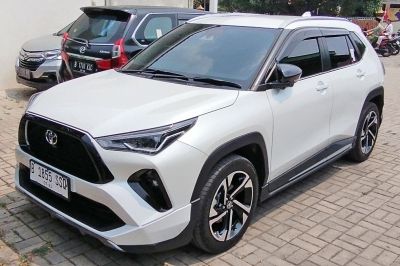
| Production: | 2023-present |
|---|---|
| Model Year: | 2023 |
| Length: | 4310 mm169.7 in |
| Width: | 1770 mm69.7 in |
| Height: | 1615 mm63.6 in |
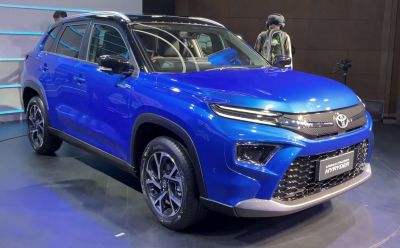
| Production: | 2022-present |
|---|---|
| Model Year: | 2023 |
| Length: | 4365 mm171.9 in |
| Width: | 1795 mm70.7 in |
| Height: | 1635 mm64.4 in |
